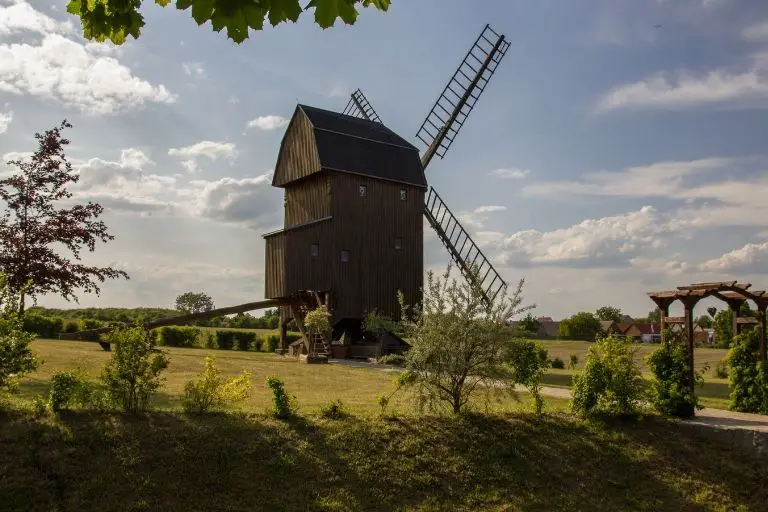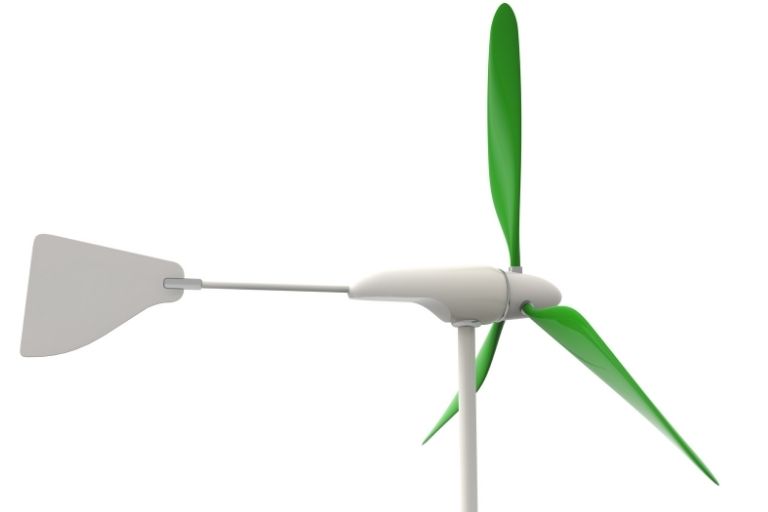Hey! This site is reader-supported and we earn commissions if you purchase products from retailers after clicking on a link from our site.
I don’t want to sound like I’m a glutton for alternative sources of power for my 5th wheel, as I already have access to using shore power as well as 800 watts worth of solar power installed on my roof. However, being a mechanically minded person that is also genuinely concerned about our world’s environmental issues these days, I have also entertained the idea of whether wind power would be a good alternative or addition for being off-grid and I have examined several different turbines in an effort to find one that would work well for an RVer.
In this article, we’ll take a comprehensive look at whether wind power is a good alternative power source for an RVer wanting to boondock or just camp off-grid be it urban or rural locations. We’ll also look at how a wind turbine works, the variety of wind turbines available to the average RVer, the pros and cons of using a wind turbine in your RV and whether it is as affordable as a solar power system when it comes down to power production versus cost.
How does a wind turbine work?
People have been using natural weather occurrences such as wind and water to their advantage for thousands of years. For example, consider the water wheel.
Water wheels have created flour and milled grains for hundreds of years by using nothing more than the natural flow of water such as a stream or river to turn a grooved grinding stone against a flat stone to produce these milled products for people to eat.
Water wheels have also been known in more modern times to be used to produce electricity which is better known as hydroelectrical power and was quite common during the 20th century and in some cases still being used today but on a much larger scale.
Have you ever been traveling in a remote area such as parts of Texas, Oklahoma, Nebraska and most plains states where there is literally no people, trees or homes? Instead, all you can see are open ranges of cattle grazing country, windmills and fences. Have you ever wondered what the windmills in the middle of nowhere were used for?

If you guessed that they were used to pump water from ground wells, then you’d be right. All over the continental United States windmills were routinely used to pump water from the ground to provide that resource to livestock and people. In many cases, those windmills were used to fill water tanks beneath them for livestock to drink from them and sometimes they were used to feed small ponds for the same reason. Additionally, they were often used to continually pump water into irrigation channels that kept fields of grain such as wheat, corn, and grass well hydrated for harvest by people and livestock.
The mechanics of that type of windmill were not complex. In short, much like an automobile engine, a windmill has a main shaft that turned when the wind rotated a series of blades designed to harvest that energy. Much like the crankshaft in an engine, the shaft of a windmill designed to pump water had a “U” shaped configuration over the pipe that went down to the well.
Connected to the drive shaft and within the pipe was a smaller rod with a piston at its base. Essentially, as the windmill blades turned the shaft, this led to the piston moving up and down and thereby pumping water from the well below. Most ranchers and farmers used these windmills to fill up troughs with well water for their livestock to drink from and many of them dug out ponds so that the water produced wouldn’t overflow the troughs but instead filled larger basins of fresh water which were less likely to dry up when the wind didn’t blow during the hotter and drier months of the summer seasons.
According to the United States Department of Energy, wind turbines generate electricity when the wind moves the fan blades, which are connected to an electric generator via a central shaft. As the blades turn, they turn the generator, creating an electric current which is then transferred to a battery bank located at the base of the tower which in this case would be in your RV.
What types of wind turbines are available for an RVer?
One of the most favorite wind turbines that I have seen RVers use is the common blade turbine shown here. These units are best used when mounted on the rear of an RV especially when attached and secured to a ladder and a bumper on the rear of your rig.
If your RV has no ladder and you need to secure it to the tongue of your camper, this could be problematic in terms of the setup when visiting new campsites. In many cases, the weight and awkwardness of the setup of the vertical shaft will require two people to secure it in place, and in most cases, it requires someone with some mechanical expertise to design a system that is easy to set up while still allowing the optimal about of energy to be harvested where you have chosen to make camp.
Of course, there are always other alternatives.
One such alternative is to choose to install a Vertical Axis Blade Turbine. These are much lighter in weight and in many instances are far easier to set up and take down while you transit between boondocking sites.
As a rule, they tend to produce less electricity than rotary blade windmills but not by much. In my opinion, where I choose between this type of turbine or a traditional blade turbine, I would choose this type of turbine.
Why? Because this type of wind turbine is far easier to stow away when not in use and much lighter making it a heck of a lot easier to set up when you get to your off-grid campsite.

What are the advantages and disadvantages of wind turbines?
As opposed to solar panels, wind turbines produce far less electricity than solar panels. However, if you happen to be located in an area that gets a steady wind regardless of whether it’s day or night you will still be gaining a charge to your battery bank. This is especially true if you are located in an area such as the lower peninsula of Michigan where strong storms are known to move through that area during the summer months in the evening or nighttime hours. In other words, while you can harvest solar energy during the day, wind power can still allow you to bank more power over the night.
Final thoughts
Is it practical and worth the investment? Probably not. While I would love to endorse wind power as an alternative power supply for your RV, the cost of the components and the amount of time and labor needed to set up the wind supply seems counterproductive to me.
On the other hand, if you happen to land in an area that is windy then what can it hurt? Over the years, I have stayed in many places where the sun didn’t shine enough to keep my batteries fully charged. Maybe some wind power could have offset that and maybe not.
As it stands today, I’m going to pass on the wind turbine because I don’t want to deal with tearing it down, stowing it away, and then setting it up at my next campground or campsite. Those solar panels on my roof are doing simply fine.
As always, my friends, thanks for following along and I hope to see you out on the road soon.


